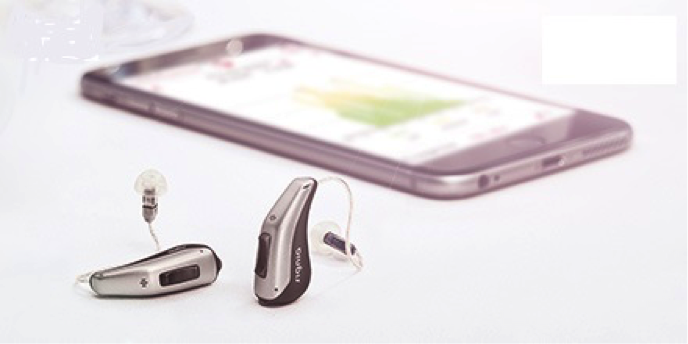5 Things to Know About the Latest Advances in Hearing Aids
Please Subscribe to our YouTube Channel
Like other digital electronics, hearing aid technology is advancing at an incredible speed. Intelligent, versatile, and easier to use than ever, they offer functionalities undreamed of just a few years ago. So, if you still think of hearing aids as squeaky, clunky prosthetic devices that only make everything louder, finding out what they are capable of now will surprise you.
1. Many hearing aids are rechargeable.
With the advent of rechargeable batteries small enough to fit into tiny hearing aids, yet powerful enough to last a full wearing day, hearing aids can now also be charged like other personal devices (e.g., smartphones and electric toothbrushes). Currently, the most user-friendly rechargeable solutions use lithium-ion batteries that can be charged inductively. Wearers never have to open the battery compartment or change a battery again. Lithium ion-batteries are high-density, able to power devices for a long time even with high energy demands, and show no memory effects. Inductive charging can be accomplished wirelessly, making the charging process even easier. Hearing aids can even automatically power off when placed in the charging cradle, and turn back on again when removed.
2. Hearing aids are among the best solutions for tinnitus.
Since tinnitus and hearing loss often go hand-in-hand, manufacturers are increasingly developing hearing aids that effectively address both problems simultaneously. Many people who suffer from both conditions find that simply being able to hear better reduces tinnitus symptoms. But for others who find amplification alone insufficient, modern hearing aids also feature dedicated tinnitus therapy functions, which include soothing nature or music-like sounds, or static noises customizable to the wearer’s needs and preferences. The latest tinnitus treatment option is called Notch Therapy. This proven therapeutic approach works completely in the background without introducing extra sounds or noises. Notch Therapy is effective for those who experience tonal tinnitus (a specific, continuous tone).
3. Adapting to new hearing aids is easier than ever thanks to your smartphone.
There’s a smartphone app for everything, including your hearing aids. Most available apps turn the wearer’s smartphone into a hearing aid remote control and/or stream music and phone calls into the hearing aids. Even more exciting innovations include telehealth apps that connect the wearer to their hearing care professional. Especially helpful during the hearing aid fitting process, wearers can document their satisfaction with their new hearing aids, and contact their hearing care professional via texts or in-app calls when problems or questions arise. The professional can then address these issues immediately, and even remotely adjust hearing aid settings. Problems can be resolved and questions answered without waiting for the next in-office appointment, which is especially important to wearers who have mobility limitations or live far from their professional.
4. Directly stream audio into your hearing aids.
When paired with a smartphone, phone calls and music can be streamed into a wearer’s premium hearing aids, either directly or via an intermediary streamer device worn around the neck. Direct streaming of audio effectively transforms hearing aids into wireless stereo headsets. Some hearing aids are even smart enough to automatically adjust the volume of the streamed signal in response to fluctuating sound levels in the environment so that the streamed signal always remains audible. When connected to televisions (typically using an accessory attached to the set), the wearer can adjust TV volume using their hearing aid volume control. Meanwhile, the actual volume remains the same for family and friends watching in the same room, so everyone can enjoy the show.
5. Hearing aids can even outperform normal hearing.
While it is important to highlight all the cool things that hearing aids can do now, their primary function remains to improve hearing and understanding. Hearing aids are smarter than ever — able to anticipate wearer hearing needs and preferences as their listening environment changes. They can adapt and orchestrate a myriad of sound processing strategies to create the ideal sound impression almost anytime and in any situation. Hearing aids can pick out the voice you want to hear in a crowded room and focus on it while reducing volume for all the other distracting sounds. In fact, in certain challenging, noisy situations, some hearing aids have even been proven to help wearers understand speech better than their normal-hearing counterparts. Furthermore, EEG brain activity recordings have shown that these hearing aids reduce listening effort and brain strain.
Not every hearing aid can do everything mentioned above. So you must do some research before choose one. You should talk to your hearing care professional to find out more about the latest advances to help you.
